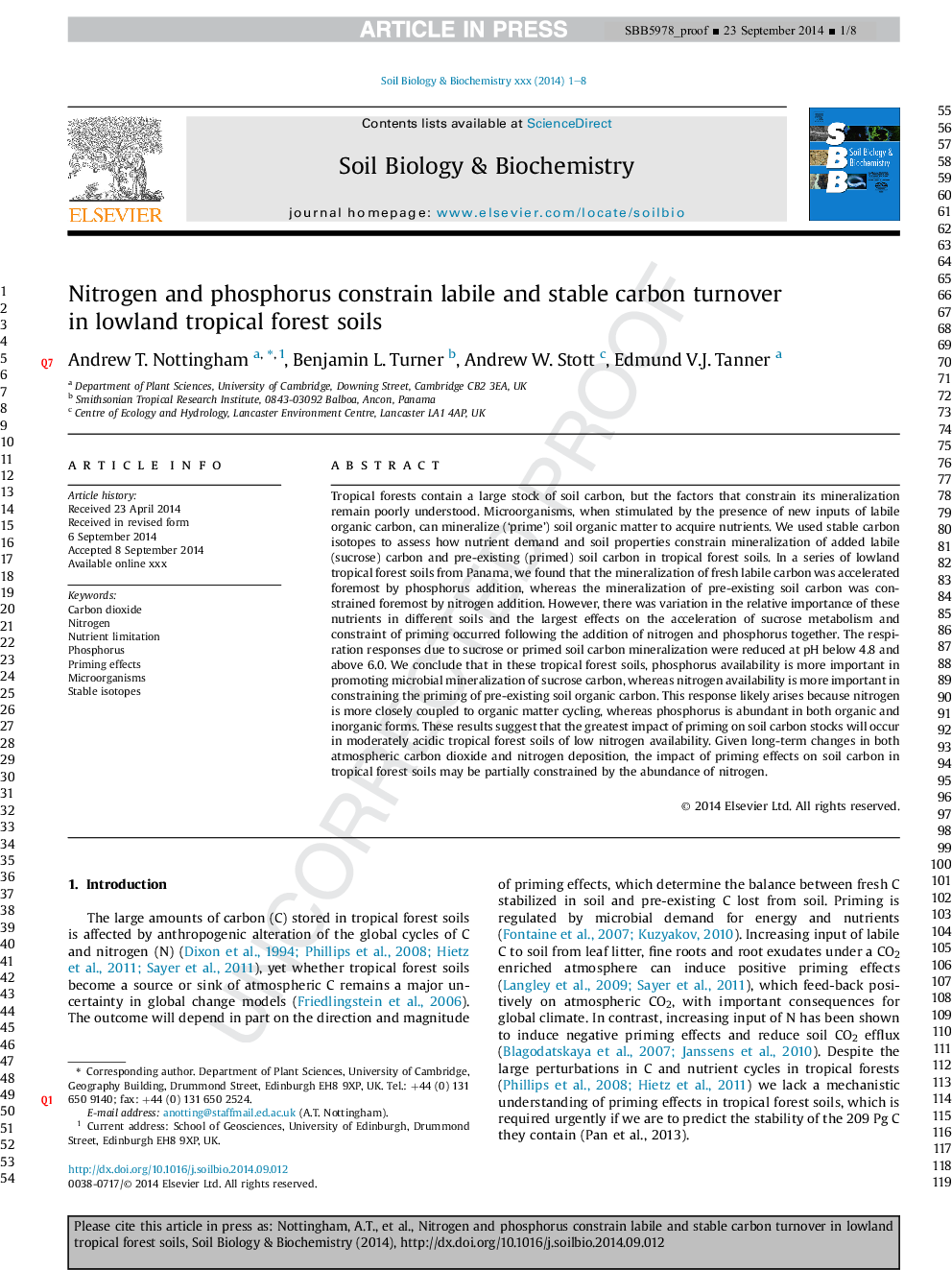| کد مقاله | کد نشریه | سال انتشار | مقاله انگلیسی | نسخه تمام متن |
|---|---|---|---|---|
| 8364361 | 1542604 | 2015 | 8 صفحه PDF | دانلود رایگان |
عنوان انگلیسی مقاله ISI
Nitrogen and phosphorus constrain labile and stable carbon turnover in lowland tropical forest soils
ترجمه فارسی عنوان
نیتروژن و فسفر محدودیتی در گردش کربن نیتروژن و پایدار در خاک های جنگلی استوایی کمرنگ دارند
دانلود مقاله + سفارش ترجمه
دانلود مقاله ISI انگلیسی
رایگان برای ایرانیان
کلمات کلیدی
دی اکسید کربن، نیتروژن، فسفر، اثرات پایه، میکروارگانیسم ها، ایزوتوپهای پایدار،
موضوعات مرتبط
علوم زیستی و بیوفناوری
علوم کشاورزی و بیولوژیک
دانش خاک شناسی
چکیده انگلیسی
Tropical forests contain a large stock of soil carbon, but the factors that constrain its mineralization remain poorly understood. Microorganisms, when stimulated by the presence of new inputs of labile organic carbon, can mineralize ('prime') soil organic matter to acquire nutrients. We used stable carbon isotopes to assess how nutrient demand and soil properties constrain mineralization of added labile (sucrose) carbon and pre-existing (primed) soil carbon in tropical forest soils. In a series of lowland tropical forest soils from Panama, we found that the mineralization of fresh labile carbon was accelerated foremost by phosphorus addition, whereas the mineralization of pre-existing soil carbon was constrained foremost by nitrogen addition. However, there was variation in the relative importance of these nutrients in different soils and the largest effects on the acceleration of sucrose metabolism and constraint of priming occurred following the addition of nitrogen and phosphorus together. The respiration responses due to sucrose or primed soil carbon mineralization were reduced at pH below 4.8 and above 6.0. We conclude that in these tropical forest soils, phosphorus availability is more important in promoting microbial mineralization of sucrose carbon, whereas nitrogen availability is more important in constraining the priming of pre-existing soil organic carbon. This response likely arises because nitrogen is more closely coupled to organic matter cycling, whereas phosphorus is abundant in both organic and inorganic forms. These results suggest that the greatest impact of priming on soil carbon stocks will occur in moderately acidic tropical forest soils of low nitrogen availability. Given long-term changes in both atmospheric carbon dioxide and nitrogen deposition, the impact of priming effects on soil carbon in tropical forest soils may be partially constrained by the abundance of nitrogen.
ناشر
Database: Elsevier - ScienceDirect (ساینس دایرکت)
Journal: Soil Biology and Biochemistry - Volume 80, January 2015, Pages 26-33
Journal: Soil Biology and Biochemistry - Volume 80, January 2015, Pages 26-33
نویسندگان
Andrew T. Nottingham, Benjamin L. Turner, Andrew W. Stott, Edmund V.J. Tanner,
